On July 31, SEC Chair Paul Atkins announced a far-reaching new policy—'Project Crypto'. This blockchain reform initiative led by the SEC has a clear goal: to completely rewrite the regulatory logic of the U.S. in the era of crypto assets, allowing the financial market to 'shift on-chain' and realize the grand vision depicted by the Trump administration—to make the U.S. the 'world crypto capital'.
The past model of 'enforcement instead of regulation' not only drove innovative companies in the crypto space to flee to Singapore and Dubai but also missed the opportunity for the U.S. to lead the next generation of financial infrastructure. The launch of 'Project Crypto', unlike the regulatory repression of the past few years, undoubtedly sends a strong signal to the entire industry: the on-chain era in the U.S. starts now.
Regulatory easing brings a golden window for DeFi protocols like Uniswap and Aave.
The attitudes of past chairs of the U.S. Securities and Exchange Commission (SEC) towards crypto assets and their derivatives—especially DeFi (decentralized finance)—often determine the temperature and activity level of the U.S. market. Under Gary Gensler's administration, the SEC's regulatory strategy centered on 'priority of securities definition' and 'law enforcement as the guideline', emphasizing the comprehensive inclusion of token trading into the traditional securities framework. During his tenure, over 125 enforcement actions related to crypto were promoted, involving numerous DeFi projects, including subpoenas for Uniswap and lawsuits against Coinbase, almost pushing the compliance thresholds for on-chain products to historic highs.
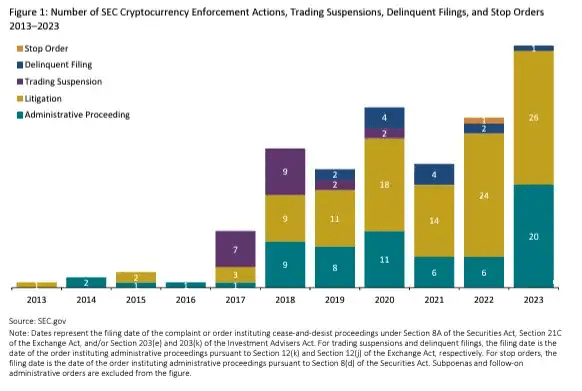
After the new chair Paul Atkins took office in April 2025, the SEC's regulatory style underwent a fundamental change. He quickly initiated a roundtable discussion titled 'DeFi and the American Spirit' to ease regulations on DeFi.
In Project Crypto, Atkins clearly states that the original intention of U.S. federal securities law is to protect investors and market fairness, not to stifle technology architectures that do not require intermediaries. He believes that decentralized financial systems like automated market makers (AMMs) can fundamentally achieve non-intermediated financial market activities and should be granted legitimate status at the institutional level. Developers who 'just write code' should be provided with clear protections and exemptions, while intermediary institutions wishing to offer services based on these protocols should have a clear and executable compliance pathway.
This shift in policy thinking undoubtedly releases positive signals for the entire DeFi ecosystem. Especially protocols like Lido, Uniswap, and Aave, which have already formed on-chain network effects and possess highly autonomous designs, will gain institutional recognition and development space under the logic of non-intermediated regulation. Protocol tokens long troubled by the 'shadow of securities' may also reshape valuation logic in the context of policy easing and market participation returning, potentially becoming 'mainstream assets' in the eyes of investors once again.
Building the next generation of financial gateways: Super-App will reshape the competitive landscape of trading platforms.
In his speech, Paul Atkins proposed the concept of a 'Super-App', which is highly practical and transformative. Atkins believes that current securities intermediaries face cumbersome compliance structures and redundant licensing barriers when providing traditional securities, crypto assets, and on-chain services, directly hindering product innovation and user experience upgrades. He proposed that future trading platforms should be able to integrate various services, including non-securities crypto assets (like $DOGE), securities crypto assets (like tokenized stocks), traditional securities (like U.S. stocks), as well as staking and lending, all under one license. This is not only a compliance innovation that simplifies processes but also the core of future competitive advantage for platform-type companies.
Regulators will promote the real implementation of this super application architecture. Atkins has clearly indicated that the SEC will draft a regulatory framework allowing crypto assets to coexist and trade on SEC-registered platforms, regardless of whether they constitute securities. Meanwhile, the SEC is also evaluating how to leverage existing authority to relax listing conditions for certain assets on non-registered exchanges (such as platforms with only state licenses). Even derivatives platforms regulated by the CFTC may be expected to include some leverage functions to release greater trading liquidity. The overall direction of regulatory reform is to break the binary boundary between securities and non-securities, allowing platforms to flexibly allocate assets based on the nature of the product and user demand, rather than being shackled by compliance structures.
The most direct beneficiaries of this transformation are undoubtedly Coinbase and Robinhood. These two companies have already established a diversified trading structure that covers mainstream crypto assets, operates traditional securities trading, and provides lending and wallet services. Encouraged by Project Crypto, they are likely to become the first platforms to benefit from policy dividends—achieving one-stop services and bridging on-chain products with traditional user groups. Notably, Robinhood has completed its acquisition of Bitstamp this year and officially launched tokenized stock trading, bringing U.S. stocks like Apple, Nvidia, and Tesla online in ERC-20 format. This move is precisely a prelude to the Super-App model: using on-chain protocols to provide traditional stock trading experiences without disrupting the familiar usage patterns of users.
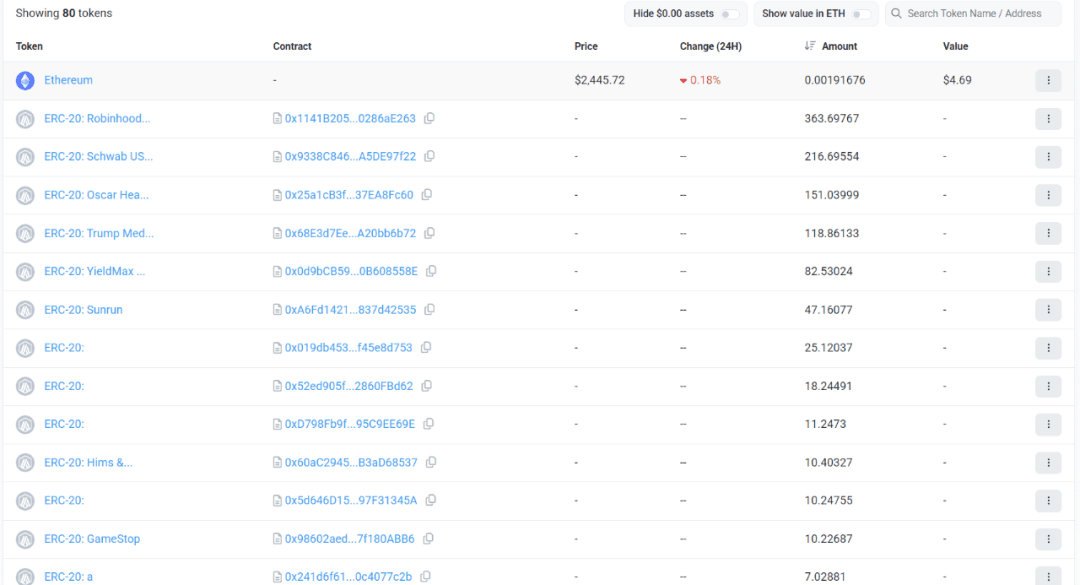
Coinbase, on the other hand, is advancing the developer ecosystem through the Base chain, attempting to integrate exchanges, wallets, social, and application layer services. If they can integrate traditional securities and on-chain assets at the compliance level in the future, Coinbase is very likely to develop into a 'chain version of Charles Schwab' or 'next-generation Morgan Stanley'—not only an asset entry point but also a complete platform for financial tool distribution and operation.

It is foreseeable that once the Super-App architecture is fully released, it will become the core battleground for competition among trading platforms. Who can first achieve compliant 'multi-asset aggregated trading' will occupy a leading position in the next round of financial infrastructure upgrades. The regulatory stance has become increasingly clear, and platforms are already racing to enter the field. For users, this means a smoother trading experience, a richer product selection, and a financial world closer to the future.
ERC-3643: From technical protocol to policy template, a compliance bridge for the RWA track.
Regarding RWA, Paul Atkins explicitly stated in his speech that he will promote the tokenization of traditional assets and named ERC-3643 as a token standard worthy of reference in the regulatory framework. This is also the only token standard publicly mentioned during the entire speech, indicating that ERC-3643 has elevated from a technical protocol to a policy-level reference model, underscoring its significance.
Paul emphasized that when designing the innovative exemption framework, the SEC will prioritize token systems that 'embed compliance capabilities', and ERC-3643's smart contracts integrate mechanisms such as permission control, identity verification, and transaction restrictions, directly meeting current securities regulations' requirements for KYC, AML, and qualified investors.
The main feature of ERC-3643 lies in its design philosophy of 'compliance as code'. It has a built-in decentralized identity framework called ONCHAINID, where all token holders must undergo identity verification and comply with predefined rules to complete holding or transfer operations. Regardless of which public chain the token is deployed on, only users who meet KYC or qualified investor standards can truly own these assets. The smart contract layer completes compliance determinations, no longer relying on centralized audits, manual records, or off-chain agreements.
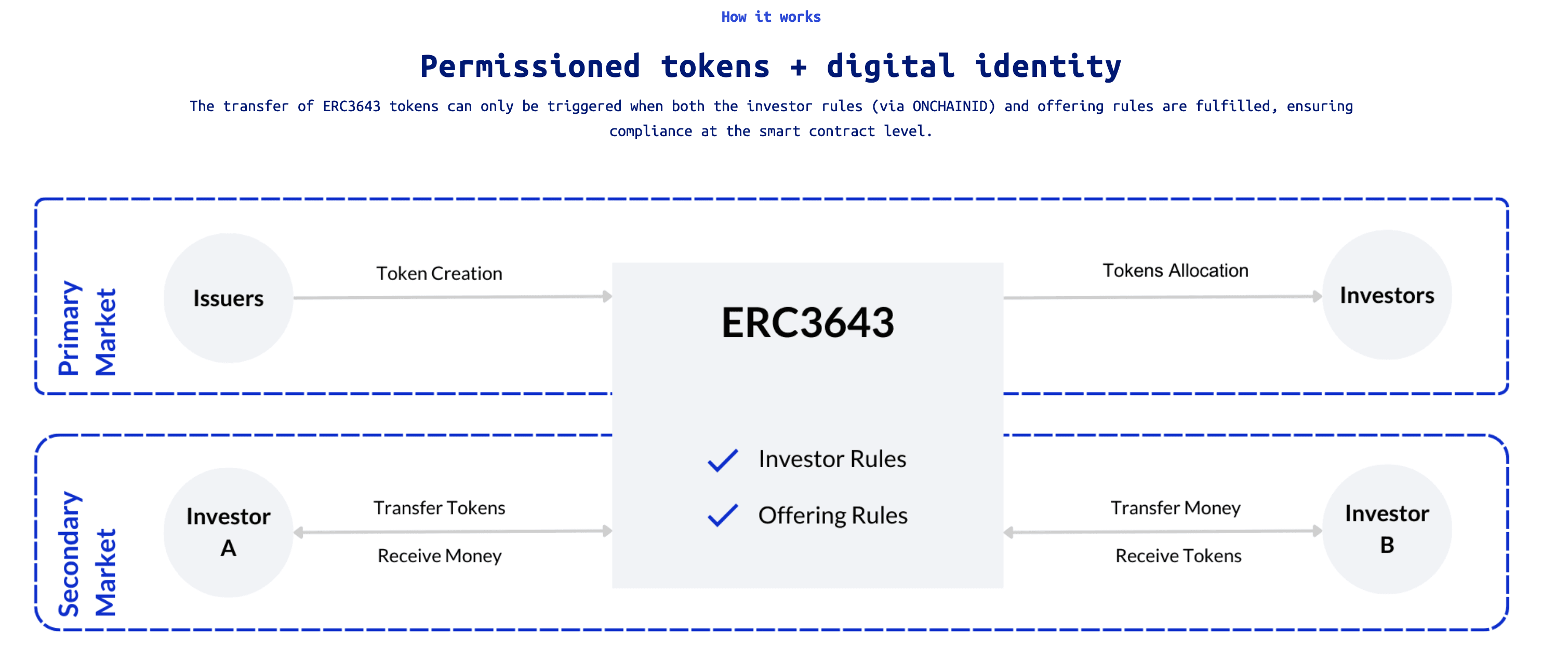
The biggest difference with ERC-20 is the introduction of the dimension of 'permissions'. ERC-20 was born in a completely open, permissionless native context on the blockchain, where any wallet address can freely receive and transfer tokens, making it a completely 'fungible tool'. In contrast, ERC-3643 targets high-value, heavily regulated asset classes such as securities, funds, and bonds, emphasizing 'who can hold' and 'whether it is compliant', making it a 'permissioned token standard'. In other words, ERC-20 is the free currency of the crypto world, while ERC-3643 is a compliant container for on-chain finance.
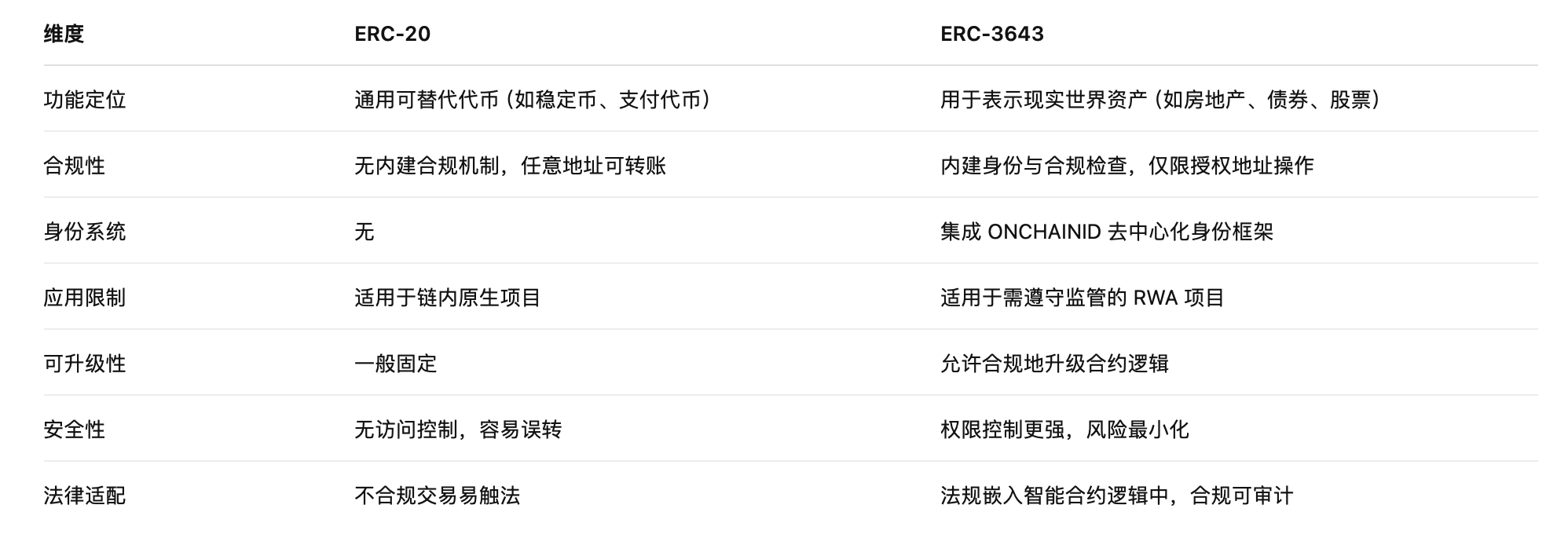
Currently, ERC-3643 has been adopted by various countries and financial institutions worldwide. The European digital securities platform Tokeny has been expanding the ERC-3643 standard into the private market for securitization in recent years. In June this year, Tokeny announced a partnership with digital securities platform Kerdo, planning to build blockchain-based private investment infrastructure through ERC-3643, covering asset types such as real estate, private equity, hedge funds, and private debt.

From real estate to art collections, from private equity to supply chain notes, ERC-3643 provides the underlying support for the fragmentation, digitization, and global circulation of various assets. It is currently the only public chain token standard that combines programmable compliance, on-chain identity verification, cross-national legal compatibility, and the ability to interface with existing financial architectures.
As Paul Atkins mentioned in his speech, the future securities market must not only operate 'on-chain' but also be 'compliant on-chain'. In this new era, ERC-3643 may become a key bridge connecting the SEC with Ethereum, linking TradFi with DeFi.
Entrepreneurs are returning to the United States, and the primary market will take off again from the blockchain.
For a long time, the 'Howey Test' has been the primary basis for the SEC to determine whether an asset constitutes a security. Specifically, it includes four elements: whether there is a monetary investment, whether the investment is in a common enterprise, whether there is reliance on the efforts of others to generate profit, and whether there is an expectation of profit. If a project meets all four criteria, it will be classified as a security and thus be subject to a series of securities law frameworks, including pre-issue prospectuses, information disclosures, and regulatory filings.
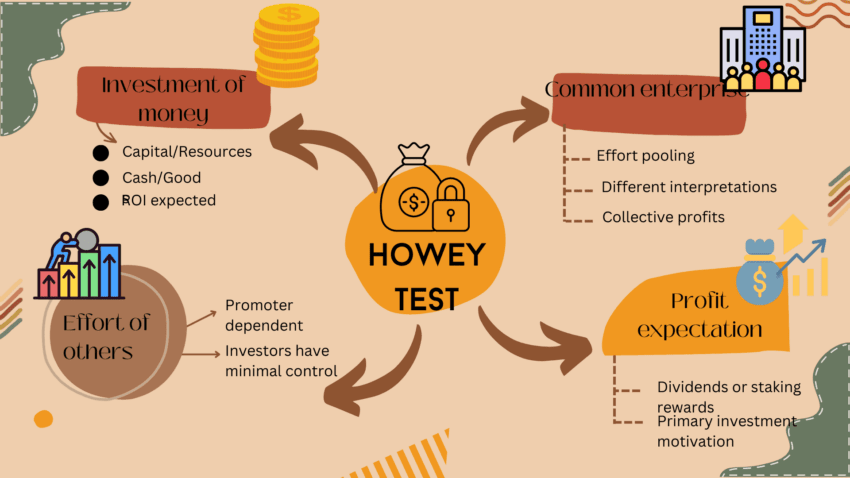
It is precisely due to the ambiguity of this testing standard and inconsistent enforcement that a large number of projects in recent years have preferred to sacrifice the U.S. market to avoid potential regulatory risks, even deliberately 'blocking' U.S. users and not opening airdrops and incentives.
In the latest Project Crypto policy announcement, SEC Chair Paul Atkins explicitly stated for the first time that a reclassification standard for crypto assets will be established, providing clear disclosure standards, exemption conditions, and safe harbor mechanisms for common on-chain economic activities such as airdrops, ICOs, and staking. The SEC will no longer default to 'issuing tokens = securities', but will reasonably classify them into different categories such as digital commodities (like Bitcoin), digital collectibles (like NFTs), stablecoins, or security tokens based on their economic attributes and provide appropriate legal pathways.
This represents a critical turning point: project parties will no longer need to 'pretend not to issue tokens', nor will they have to cover incentive mechanisms through foundations, DAOs, or other detours. They will no longer need to register projects in the Cayman Islands, but rather focus on coding, and teams driven by technology will receive institutional recognition.
In the current landscape where emerging sectors like AI, DePIN, and SocialFi are rapidly rising and market demand for early-stage financing is surging, this regulatory framework based on substantive classification and encouragement of innovation is expected to stimulate a wave of projects returning to the United States. The U.S. is no longer a market that crypto entrepreneurs avoid but may once again become their first choice for issuing tokens and fundraising.
Summary
'Project Crypto' is not a single piece of legislation, but a comprehensive set of systemic reforms. It depicts a future where decentralized software, token economy, and capital market compliance converge. Paul Atkins' stance is also very clear: 'Regulation should no longer stifle innovation but pave the way for it.'
For the market, this also serves as a clear signal of policy shift. From DeFi to RWA, from Super Apps to token issuance and fundraising, who can take off in this round of policy dividends depends on who can respond first to this U.S.-led 'on-chain capital market revolution'.
